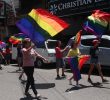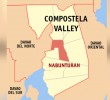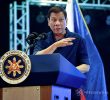[An abridged English version of a Talk I delivered at a Youth Forum in UP-Mindanao last November 21, 2014]
The word “youth” in the title of this discourse is meant to include all young people, all young men and women of this land, our country—the Philippines. It does not only refer to the members of the Kabataang Makabayan (Patriotic Youth), albeit this month is consciously considered to be part of the commemoration of the founding of the Kabataang Makabayan on November 30. The theme of this talk—youth on the march through the years—is timely and summarily commendable, inclusive as it is of all the young people who have joined at various times in their lives in the struggle for social transformation. We have in mind, or in our imaginative contemplation, the masses of students and out-of-school youths crowding in the streets, flying banners and streamers of their signature organizations, marching with raised fists and placards loaded with defiant slogans, in step with the cadence of their heartbeats, resounding fighting chants against the forces of reaction, demanding reforms! Albeit reforms only constitute the least of what they demand.
The ultimate agenda of their action is an omnibus change—a total overhaul of the Status Quo from poverty, backwardness and underdevelopment, towards a system of social justice and genuine democracy.
As I have pointed out in an earlier essay, there were two events in our history when the nation witnessed the biggest and most massive mobilizations of the youths of the Land. These two events coincided with revolutionary uprisings whereby the youths took the lead and fisted in their hands the destiny of the nation.
The first of these was when the Filipino youths stood up in resistance against the Spanish colonial government led by GatAndres Bonifacio.of the KKK or the Katipunan. If you’d recall, in your study of Philippine history, the core leaders of the KKK were in the prime of their youth. In fact, Emilio Jacinto was only 15 or 16 years old when he joined the secret society Katipunan. And Gregorio del Pilar was a very young man, the youngest general of the revolutionary army that fought the American soldiers during the Filipino-American War.
The second event happened at the height of the Second Propaganda Movement launched in the late 1960s towards the 1970s which culminated in the First Quarter Storm or FQS. This was on the eve of the Martial Law of Marcos. The Kabataang Makabayan took a leading role in the spearhead and advance of the radical student-youth movement of the period. Along with other youth and student groups and organizations the Second Propaganda Movement intensified and intensified and spread throughout the archipelago.
The founding of the Kabataang Makabayan by Jose Maria Sison along with a host of other radical youths and student activists in the mid-1960s was a significant milestone in the over-all advance of the Filipino revolutionary movement in the country. It served to fuel the imperatives of arousing, mobilizing and organizing during the span of years from its birth towards the so-called First Quarter Storm in 1971. The KM was decidedly the avant-garde in the radical anti-imperialist youth movement, challenging the decadent feudal culture and colonial outlook that dominated society’s general consciousness.
Verily, the task that the student-youth activists undertook was unimaginably herculean. It entailed no less a steadfast commitment and supreme sacrifices, risking their life and limb in the name of people’s revolution The rigors of Martial Law proved futile to deter the youths from building up alliances with the basic masses of the people—the workers and the urban poor, the peasant masses and indigenous peoples in the countryside. Thus was the people’s revolution fired up by the painstaking mass work of youth activists who went underground and joined the revolutionary armed struggles then raging in the guerrilla zones established by the New People’s Army.
Without the incessant propaganda and organizing zeal of the youths in the cities and in the countryside, the people would not have acquired faith and courage to come out in open collective actions under the iron shadow of martial law. The unconditional people’s support enjoyed by the underground activists verily advanced the revolutionary struggle in the form of covert propaganda and organizing. Underground publications proliferated and were paassed like hot cakes from house to house, from office to office. Underground activists built railroads and highways via house-to-house human chains of allies and supporters who provided them asylum and safe passage in their revolutionary underground activities. They were veritable darling sons and daughters of the people.
The armed minions of Marcos would just wake up in the morning to find the walls already painted with anti-fascist anti-dictatorship slogans. Inside campuses tiny leaflets would fall from the high levels of school buildings like raindrops unto the ground floor below. And lightning rallies occurred in street corners and market places right in front of the very noses of the authorities.
And all roads and pathways would eventually lead to what has been known as the People Power or EDSA Revolt. Let there be no mistake about it. The so-called people power spectacle would never have happened if the revolutionary activists in the Underground Movement did not pave the way for the masses of the people to tread on to liberate themselves from the iron claws of the Marcos Dictatorship. It was the underground youth activists who provided the groundwork and courage for the people to come out in open mass sruggles including the historic massing at Edsa that drove the Dictator from Malacanang.
And so, the Marcos Dictatorship was crushed , the people made history. Freedom was restored. But sadly, Philippine society was hauled back by President Cory Aquino to where it started—to its pre-martial law foundations—the citadel of US imperialist domination in cahoots with the domestic elite consisting of big landlord and big comprador-capitalist classes.
And so, it came to pass that after 28 years wherein a string of five puppet Presidents have been installed in government, the economic-political and cultural crises that beset our society during the time before the Marcos Dictatorship are back with us today in far worsening conditions. The same evils that reigned supreme during pre-martial law days are now weighing down the people to penury and untold miseries. The continuing conditions of backwardness and underdevelopment have once more given rise to disenchantment and anger among our youths. And so, student-youth activism has arisen with renewed vigor and intensity. The forces of reaction under Noynoy Aquino are in panic it has unleashed its fascist troops to meet the forces of Revolution and Change
The Call for Change has taken on a new resounding timbre. The youths, as always, have given the answer. Revolutonary Activism is upon us in this fateful time. It throbs in the hearts of t he young men and women of this generation. Indeed, the youths have always been in the forefronts in the making of history. You can see them in your dream as large masses of students and out-of-school youths, crowding in the streets, flying banners and streamers of their signature organizations, marching with raised fists and placards loaded with defiant slogans, in step with the cadence of their heartbeats, resounding fighting chants against the forces of reaction, demanding social transformation! .
But long and arduous is the journey towards Change. Nonetheless, the youths of the present generation have taken up the challenge and their march onward is directed towards the beacon constantly glowing in the eastern sky—bloody red like the color of the bloody footways of the people’s revolution now raging in the countryside. It won’t stop — the march of the Filipino youth. It won’t stop. It won’t stop until the glorious daybreak of victory.










